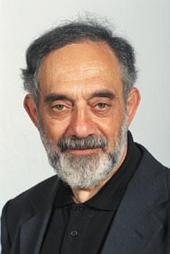by Fr. John Romanides
 Some people are convinced that sacred tradition is guarded by episcopal synods. But contemporary synods in the Orthodox Church are not like the local or ecumenical councils of bishops in the age of the early Christians, because the early councils were composed of bishops who had mastered the Church’s therapeutic method. Their aim in coming together as a council was not merely to safeguard the Church’s doctrine and liturgical order, as is the case today.
Some people are convinced that sacred tradition is guarded by episcopal synods. But contemporary synods in the Orthodox Church are not like the local or ecumenical councils of bishops in the age of the early Christians, because the early councils were composed of bishops who had mastered the Church’s therapeutic method. Their aim in coming together as a council was not merely to safeguard the Church’s doctrine and liturgical order, as is the case today.
No, their aim was to preserve and protect the Church’s therapeutic method. So a proper bishop is a master of the therapeutic method of the Church. During those early years, the work of a bishops’ synod was absolutely vital, more so than today. Their task was to preserve and protect the Church’s therapeutic method and curative treatment.
But when the bishops’ synod would safeguard this method, they would struggle along two fronts. The inner front involved taking care to safeguard sound ascetic culture and practices within the Church. The outer front consisted in safeguarding doctrinal teachings for the cure of the soul. Another aspect of the inner front was protecting dogmas from heresies, which always have their source in people who have not mastered the proper therapeutic method. Whenever an innovation appears within the Church, it always means, from the very moment it appears, that the person introducing the innovation not only fails to view doctrine properly, but he also fails to be in a healthy spiritual state.
Some of the greatest Fathers of the Church were systematizers who situated their understanding of doctrine in the context of the therapeutic method. These include St. John of Damascus, St. Maximus the Confessor, St. Symeon the New Theologian, and St. Dionysius the Areopagite, among others. We should also mention the disciples of St. Gregory Palamas. Moreover, we also find all these basic principles present and organized in the works of St. Ignatius the God-bearer, because this is an unbroken tradition dating back to the first century. The same basic principles are also present throughout St. Paul’s epistles, as well as throughout the entire Old and New Testaments. If we have the proper criteria, we can discover the presence of these basic principles and locate them in texts that contain them.
St. Makarius of Egypt carefully explains these issues by setting forth a coherent body of principles. He claims that Christians who do not have noetic prayer are not intrinsically different from believers in other religions. The only factor that makes such Christians different from believers of other religions is that these Christians intellectually believe in Christ and merely accept Christian doctrine, while the believers in other religions do not accept Christian doctrine. But such Christians do not gain anything from this kind of intellectual faith, because it does not heal them or purify their hearts from the passions. In terms of healing the human personality, they remain without benefit and with behavior that does not differ from that of non-Christians. This can be seen in their way of life.
Consider an Orthodox Christian whose soul is sick, but who not only fails to struggle to be healed, but does not even imagine that the Church has an effective therapeutic strategy for curing his sickness. What is the difference between such a nominal Orthodox Christian and a Muslim, for example?
Does doctrine make him different?
But what good is doctrine when it is not used as a pathway towards healing? What good is doctrine when it is merely kept hung up in the closet so that it can be worshiped? In other words, what is the point of worshiping the letter of the law and ignoring the spirit, hidden within the letter?
– Fr. John Romanides Patristic Theology (Lecture 58, On Councils)
